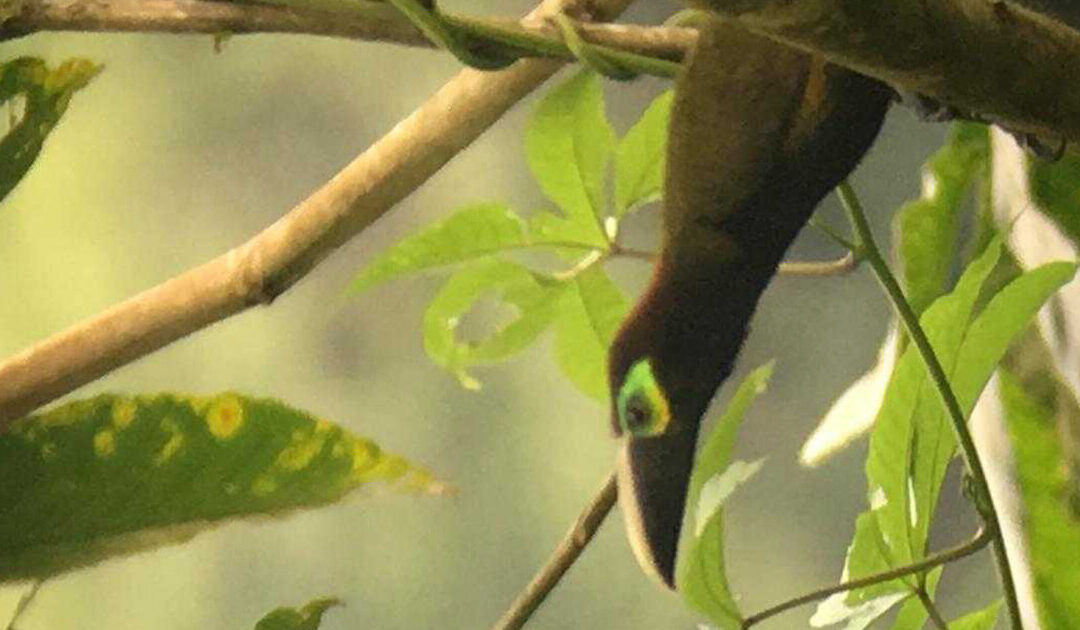After many years of leading bird watching tours in Costa Rica, it is always exciting for an experienced guide to see something new. Recently, on an early morning bird watching tour in the forest gardens at Arenal Observatory Lodge, naturalist guide Cristian Campos saw something quite unusual.
In a tall Cecropia tree, there perched two very uncommon Yellow-eared Toucanets (Selenidera spectabilis). The tree’s bare branches making it very easy to spot the rare colorful birds, Cristian and his bird watching guests managed to take several photos before the birds flew off seconds later.
Cristian, who is a Costa Rica Tourism Board certified naturalist guide, has been leading bird watching tours at Arenal Observatory Lodge since 2004. He said he only sees the Yellow-eared Toucanet in the Arenal Volcano area maybe once or twice in a year. In the toucan family, Toucanets don’t usually live in large groups. Cristian said he has only seen them in pairs or alone. These two were juveniles.
Yellow-eared Toucanets live in a very limited area in Costa Rica, mostly in the Caribbean, so to see them by Arenal Volcano is quite special. Their population is suspected to have decreased in Costa Rica from habitat fragmentation. Toucanets live in the humid forests of Central America, including Honduras, Costa Rica, Nicaragua and Panama, and also in western Colombia and northwestern Ecuador.
There are about 40 different species in the Toucan family, including Toucans, Aracaris, and Toucanets. In Arenal, it is common to see two types of toucans: the Keel-billed Toucan and Chestnut-mandibled Toucan, also called the Yellow-throated Toucan. Cristian said he also sometimes sees Collared Aracaris.
Close to 900 species of birds can be found in Costa Rica – an incredible amount for a country of such small size. At Arenal Observatory Lodge and vicinity, there have been more than 400 kinds of birds recorded, making the Arenal hotel a great destination for bird watching in Costa Rica. In an average morning bird watching tour, Cristian said he can see up to 50 different species of birds. He recommends the best time to go is between 6:00 and 8:00 a.m., and to go in small groups.
Facts about Yellow-eared Toucanets:
- Yellow-eared Toucanets are relatively large in size, around 38 cm (15 in) tall.
- Males have yellow streaks on the feathers covering their ears (known as auricular coloring). Females do not and instead have a brown crown.
- Toucanets are particularly noted for their large colorful bills, which have serrated edges for cutting fruit.
- They live about 20 years.
- The mating ritual is rather fun for males and females, involving throwing fruit to one another.
- Toucanets nest high up in hollow areas in trees.

